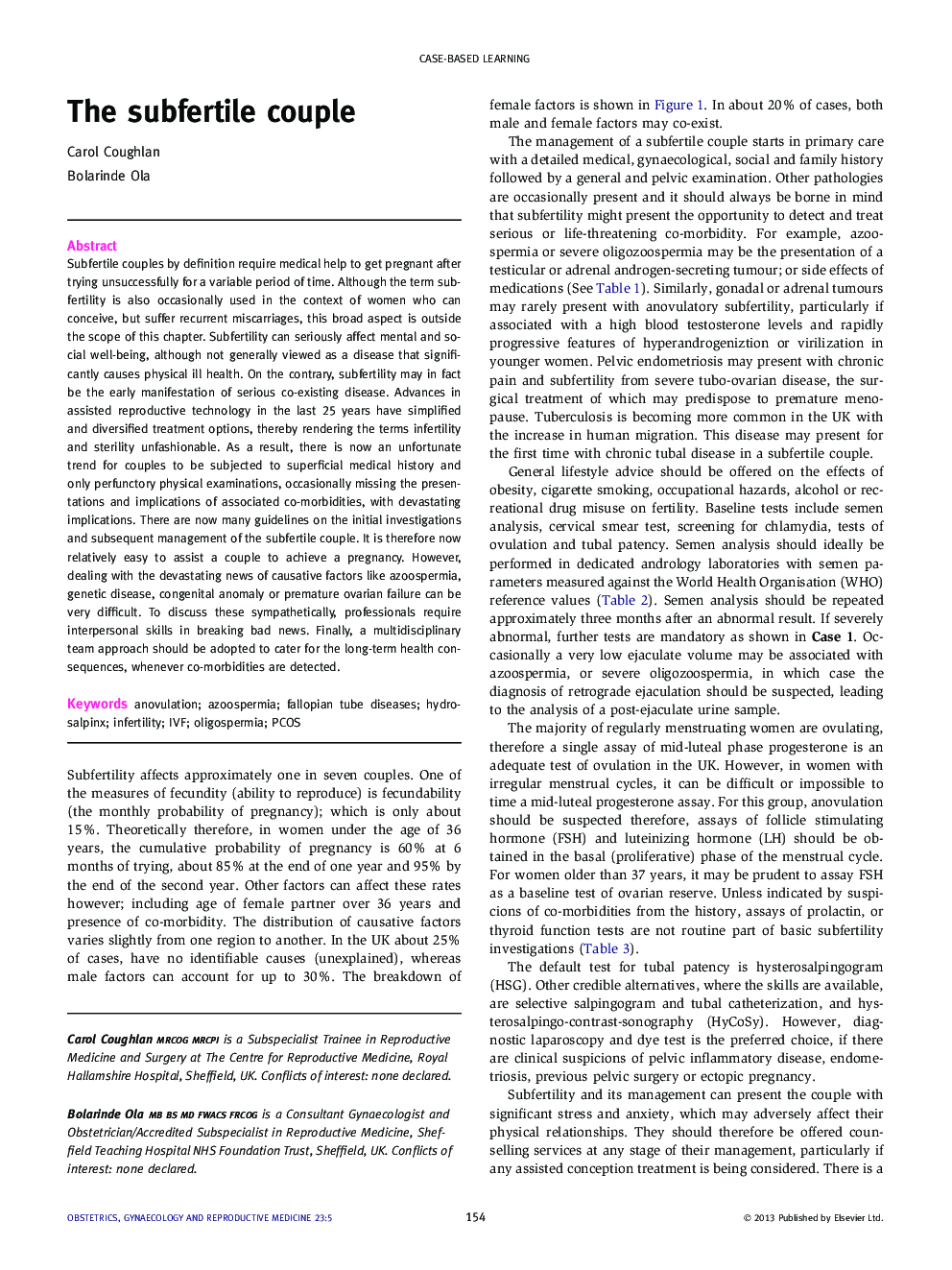| Article ID | Journal | Published Year | Pages | File Type |
|---|---|---|---|---|
| 3966737 | Obstetrics, Gynaecology & Reproductive Medicine | 2013 | 6 Pages |
Subfertile couples by definition require medical help to get pregnant after trying unsuccessfully for a variable period of time. Although the term subfertility is also occasionally used in the context of women who can conceive, but suffer recurrent miscarriages, this broad aspect is outside the scope of this chapter. Subfertility can seriously affect mental and social well-being, although not generally viewed as a disease that significantly causes physical ill health. On the contrary, subfertility may in fact be the early manifestation of serious co-existing disease. Advances in assisted reproductive technology in the last 25 years have simplified and diversified treatment options, thereby rendering the terms infertility and sterility unfashionable. As a result, there is now an unfortunate trend for couples to be subjected to superficial medical history and only perfunctory physical examinations, occasionally missing the presentations and implications of associated co-morbidities, with devastating implications. There are now many guidelines on the initial investigations and subsequent management of the subfertile couple. It is therefore now relatively easy to assist a couple to achieve a pregnancy. However, dealing with the devastating news of causative factors like azoospermia, genetic disease, congenital anomaly or premature ovarian failure can be very difficult. To discuss these sympathetically, professionals require interpersonal skills in breaking bad news. Finally, a multidisciplinary team approach should be adopted to cater for the long-term health consequences, whenever co-morbidities are detected.
